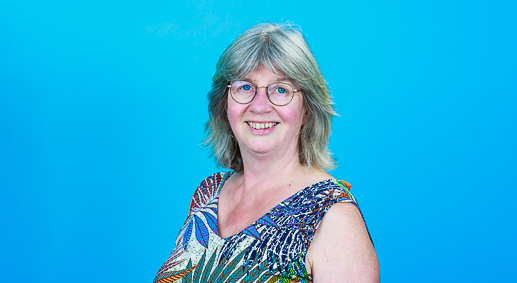Biosketch

Prof.dr. Ida van der Klei
Ida van der Klei studied Biology and obtained her PhD in Microbial Physiology in 1991. During her postdoctoral research she moved to cell biology (organelle biology). At present her research focusses on peroxisomes using yeast as simple model organism. The outcome of her studies can be translated to higher eukaryotes and hence is of high relevance for human health and disease. Current research topics include:
• Peroxisomal membrane biogenesis, including expansion of the peroxisomal membrane (the role of membrane contact sites) and sorting of peroxisomal membrane proteins;
• The identification of novel peroxisomal proteins using ‘omics’ approaches.
The research is multidisciplinary and includes molecular genetics, biochemistry, physiology and ‘omics’ approaches. Microscopy is a key technique and includes advanced electron microscopy approaches such as cryo-electron tomography and correlative light and electron microscopy (CLEM). The fluorescence microscopy studies include high-throughput/high-content screening of large yeast collections.
Three top publications 2017-2022
1. Jansen RLM, Santana-Molina C, van den Noort M, Devos DP & van der Klei IJ (2021) Comparative genomics of peroxisome biogenesis proteins: Making sense of the PEX proteins. Frontiers in Cell and Developmental Biology 9: 654163; DOI: https://doi.org/10.3389/fcell.2021.654163
PEX genes encode proteins involved in peroxisome biogenesis. Using a comparative genomics approach, we clarify the evolutionary relationships between all known PEX proteins in a large set of eukaryotes. This revealed that peroxisomes are not static organelles in evolution. Intriguingly, we found that organisms lacking peroxisomes still contain a few PEX proteins, which probably have alternative functions. This study contributes to the understanding of the complicated and sometimes incorrect nomenclature of PEX proteins.
2. Krikken AM, Wu H, de Boer R, Devos DP, Levine TP & van der Klei IJ (2020) Peroxisome retention involves Inp1-dependent peroxisome-plasma membrane contact sites in yeast. Journal of Cell Biology 219 (10): e201906023; DOI: https://doi.org/10.1083/jcb.201906023
During yeast budding at least one peroxisome is retained in the mother cell. We demonstrate that a peroxisome-plasma membrane contact site is responsible for peroxisome retention. Retention depends on Inp1, a protein that binds the peroxisomal membrane protein Pex3 together with lipids and a yet unknown protein in the plasma-membrane. Analysis of truncated Inp1 variants showed that the C terminus is important for association to Pex3, while a stretch of conserved positive charges and a central pleckstrin homology-like domain are important for plasma membrane binding.
3. Kumar S, de Boer R & van der Klei IJ (2018) Yeast cells contain a heterogeneous population of peroxisomes that segregate asymmetrically during cell division. Journal of Cell Science 131(3): jcs207522; DOI: https://doi.org/10.1242/jcs.207522
Using a peroxisome-targeted tandem fluorescent protein timer we show that yeast cells contain a heterogeneous population of relatively old and young peroxisomes. The peroxisome retention protein Inp1 selectively associates to the older organelles, while Inp2, a protein required for transport of peroxisomes to the bud, preferentially binds younger ones. Our data indicate that aged and deteriorated peroxisomes are retained in the mother cell, while the younger and more vital organelles are transported to the buds.
| Last modified: | 20 October 2023 12.31 p.m. |
